Repertoire
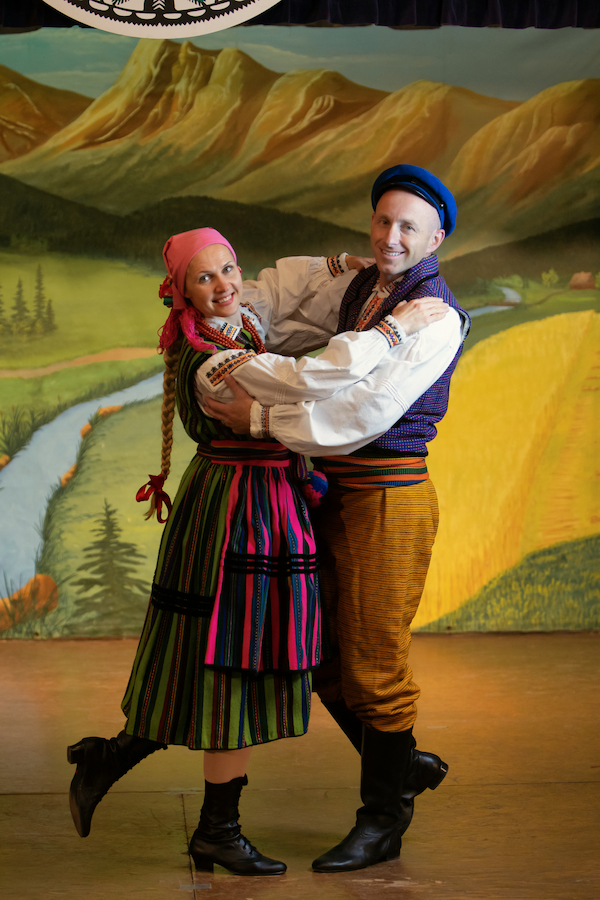
Opoczynski
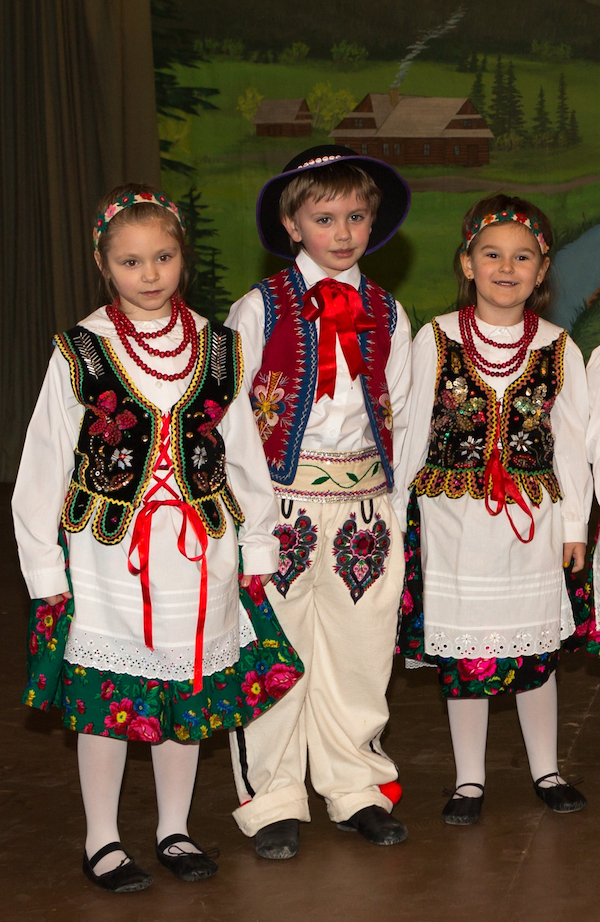
Trojak
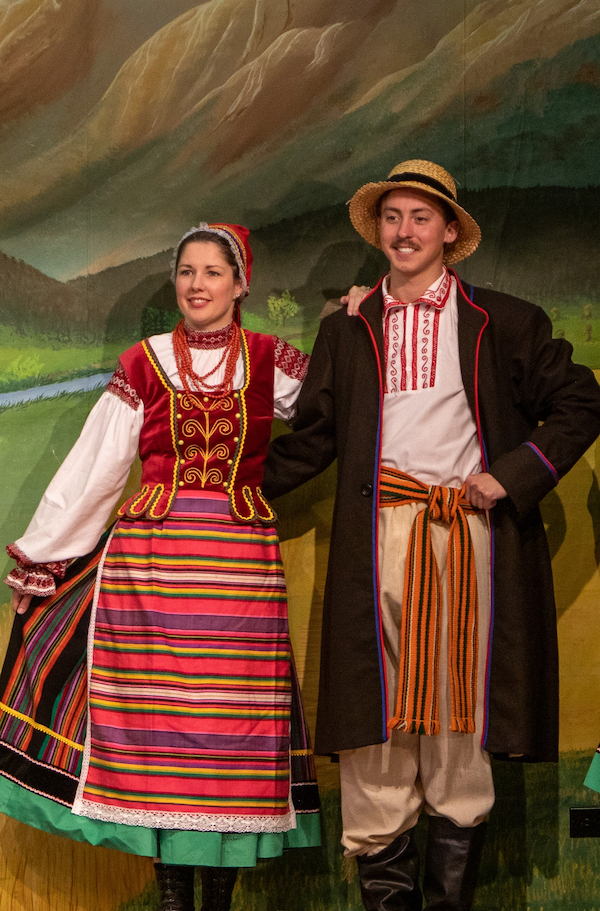
Podlasie
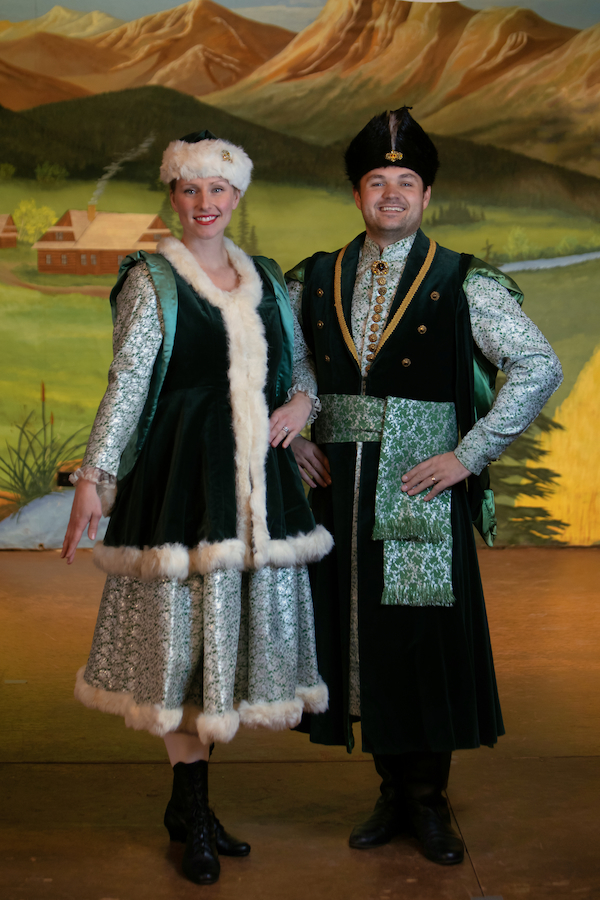
Mazur

Cieszyński /Saroz
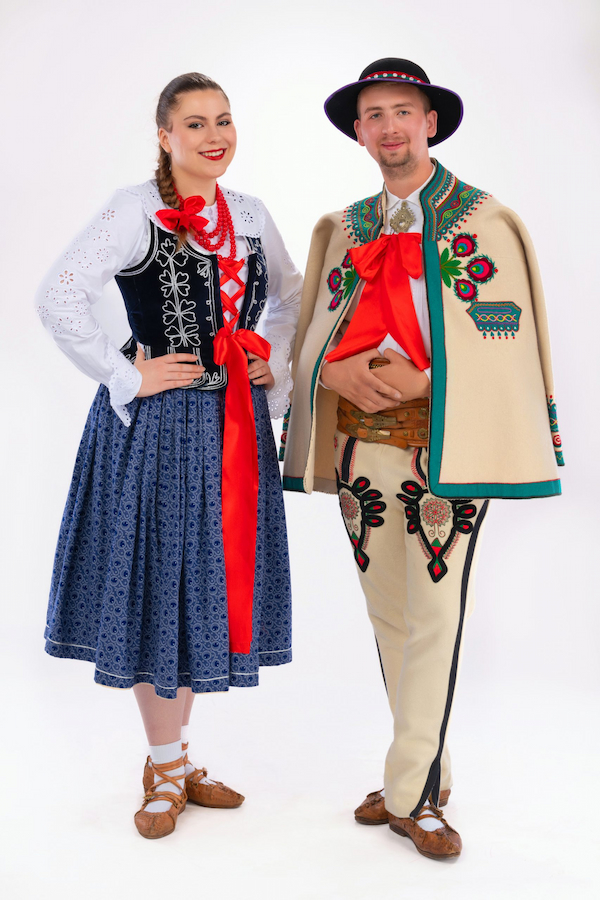
Góralski Podhalański
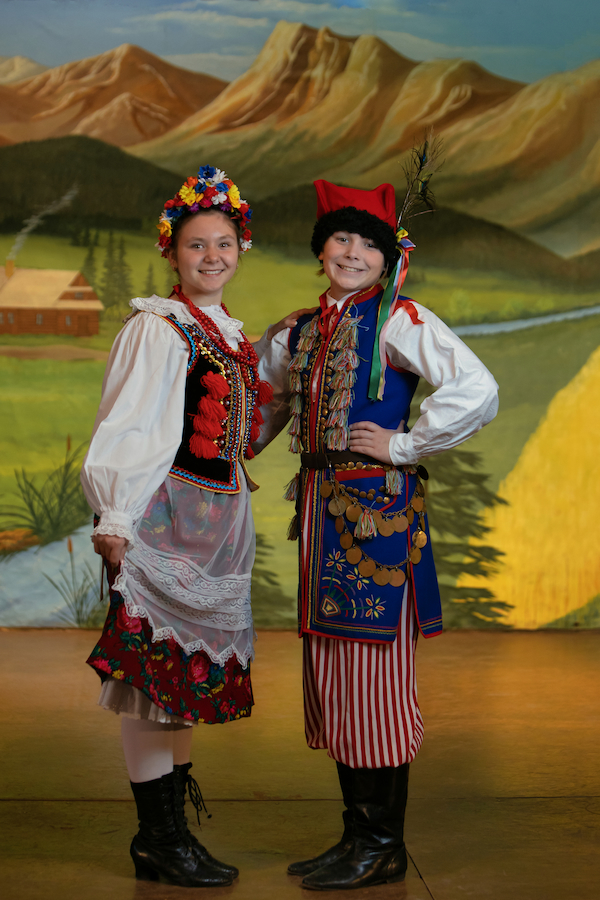
Krakowiak
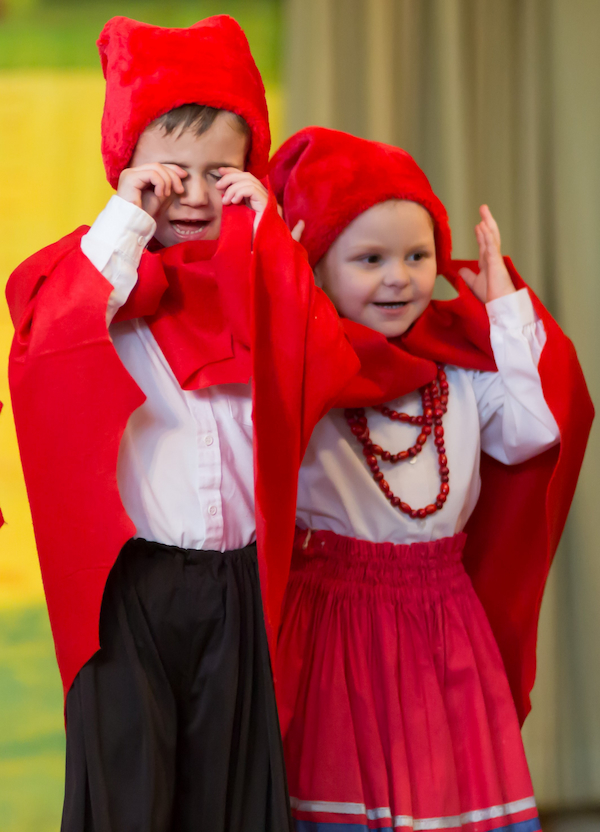
Krasnoludki

Eastern Krakowiak
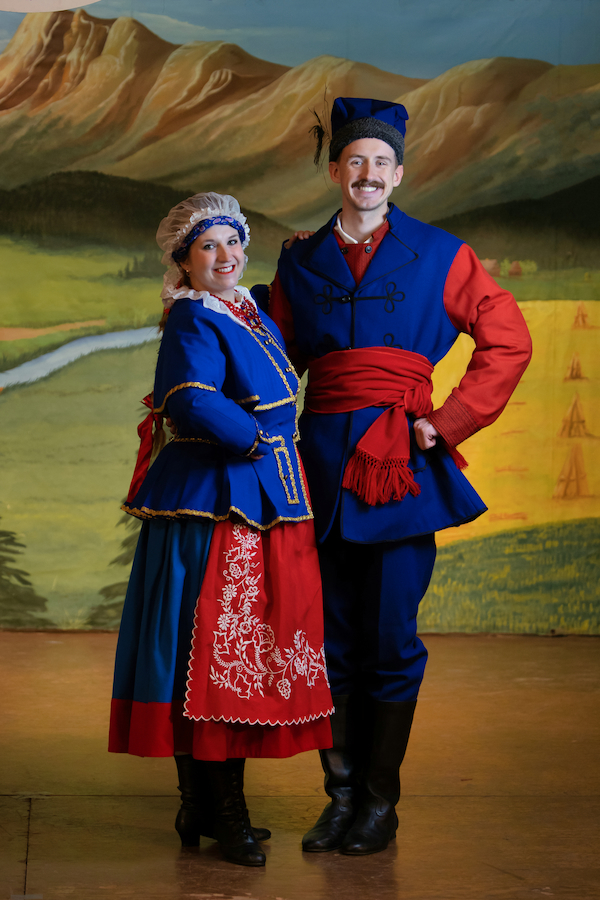
Kujawiak
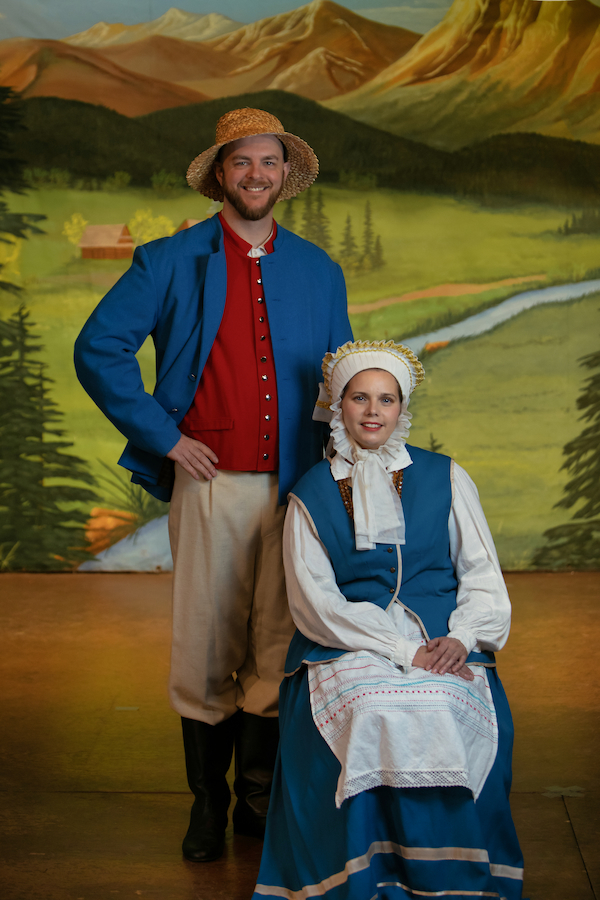
Warmińksi
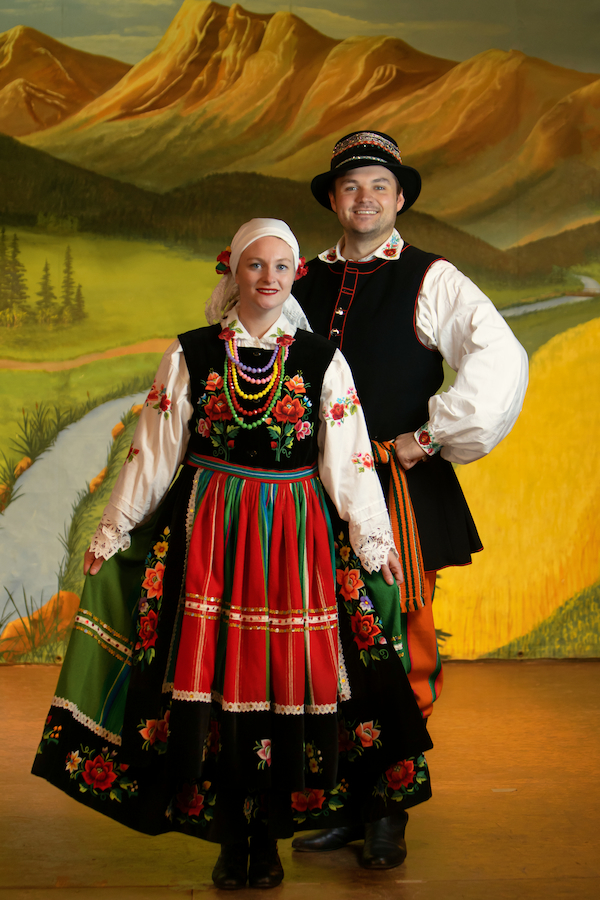
Łowicz Suite
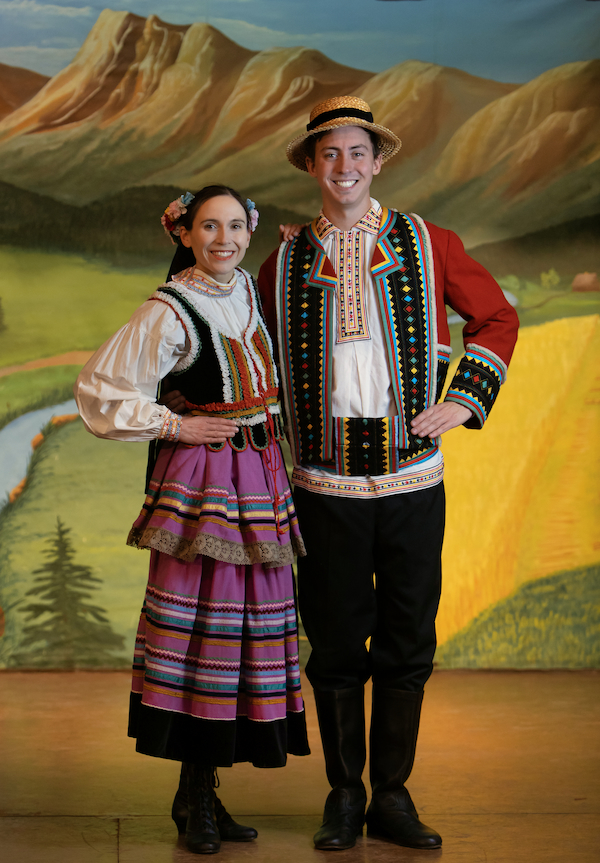
Lubelskie
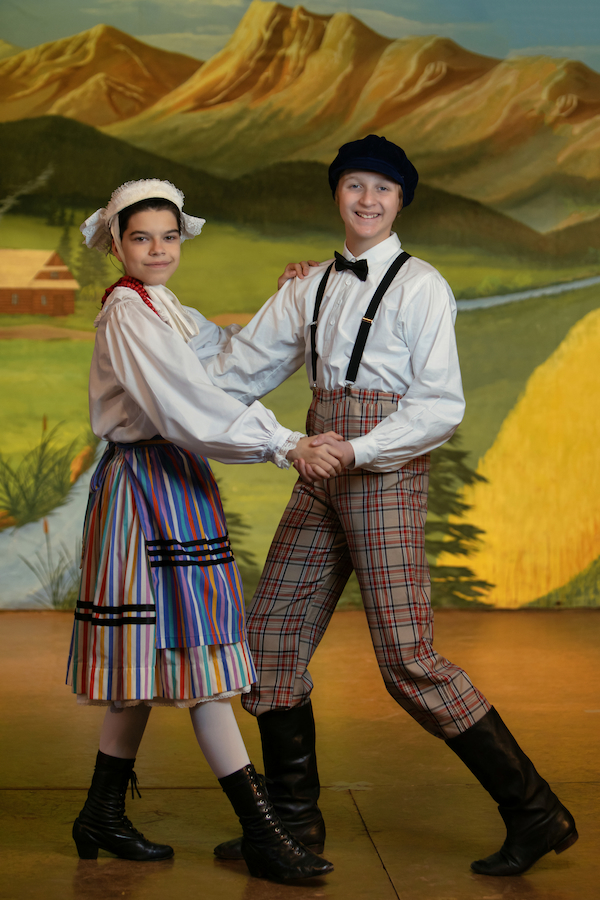
Polka Warszawska
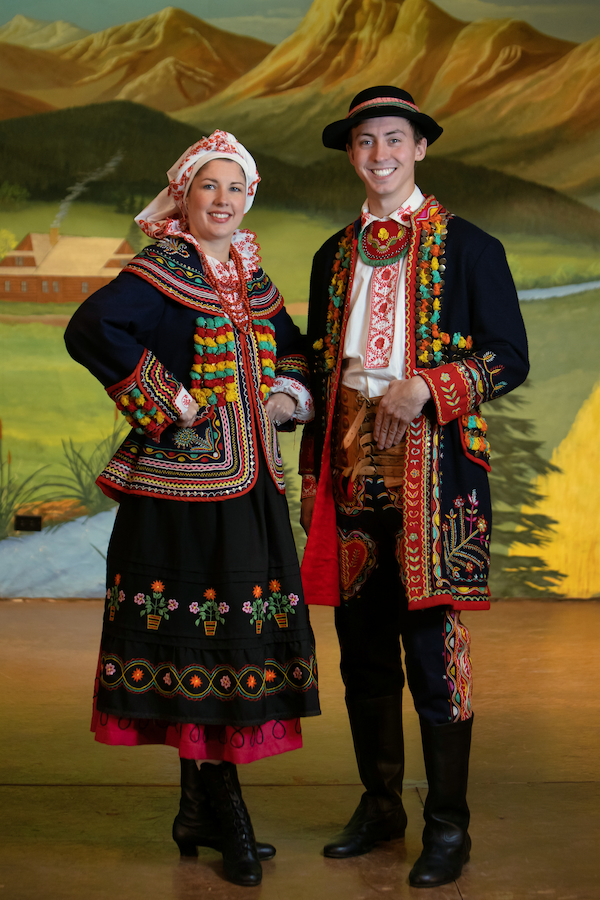
Lachy Sądeckie
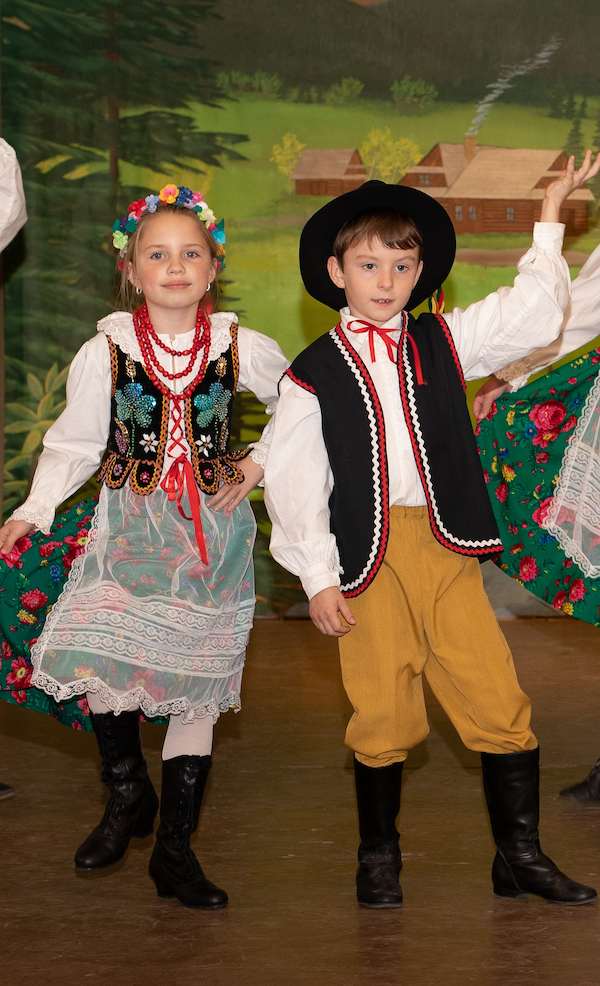
Przeworski
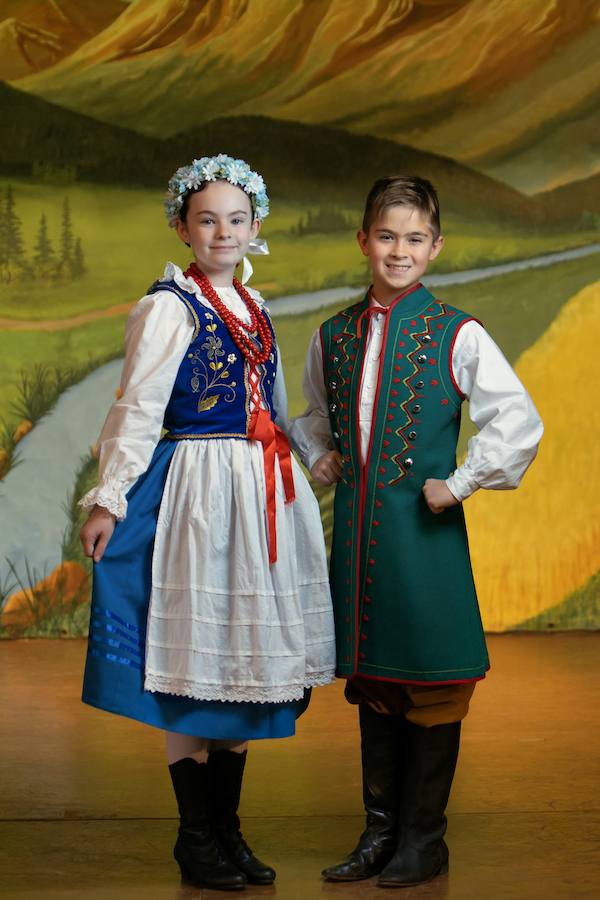
Kaszubskie
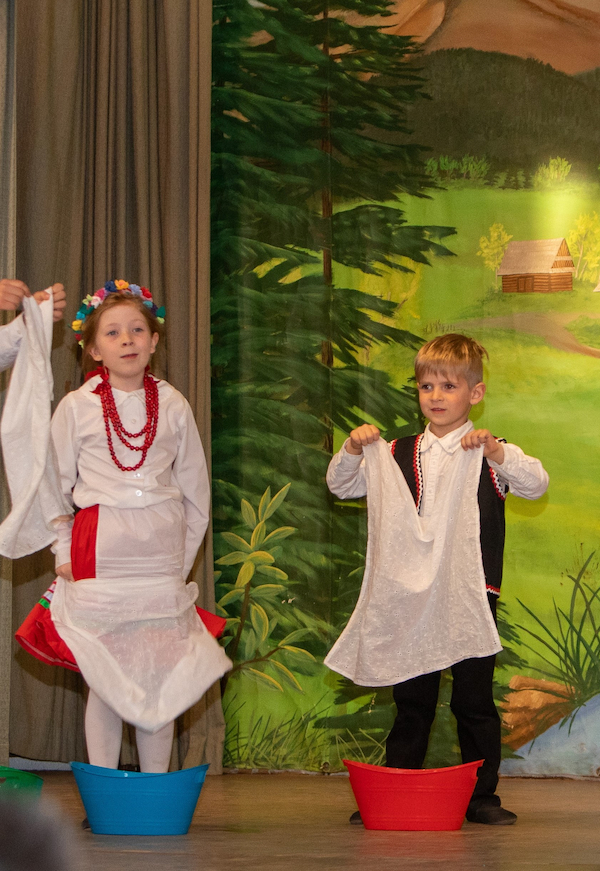
Praczki
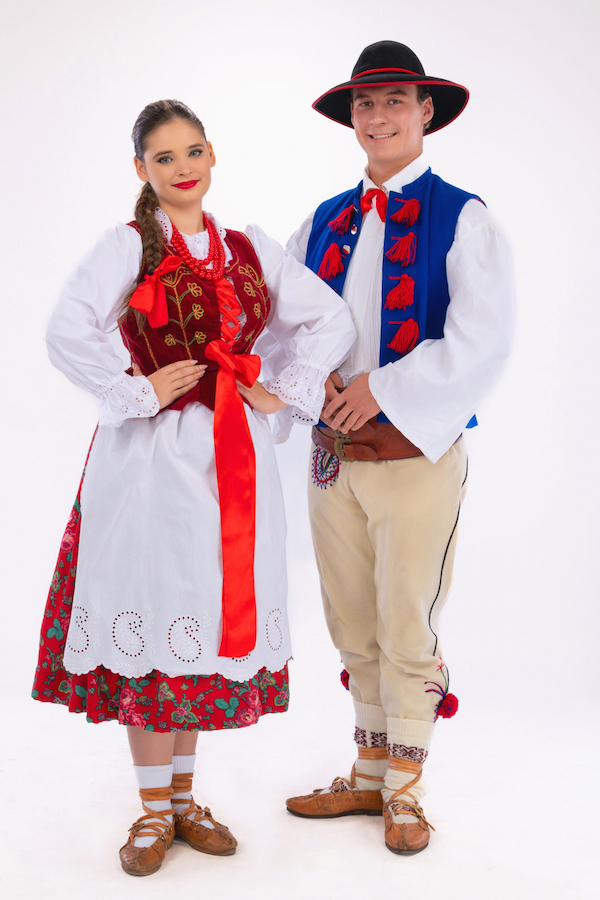
Góralski Źywiecki

"New" Beginner Dance (Nie chcę cię znać)
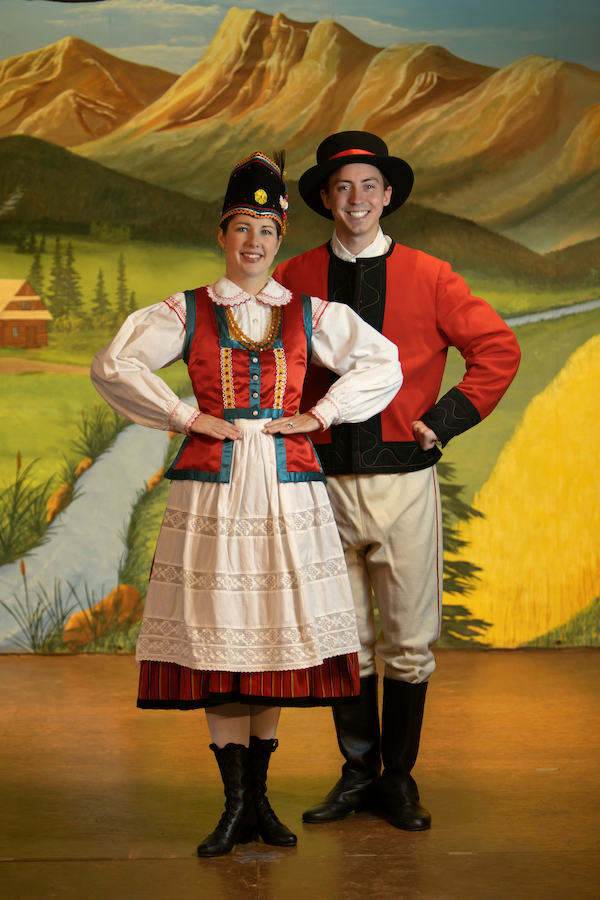
Kurpie Puszczy Zielona
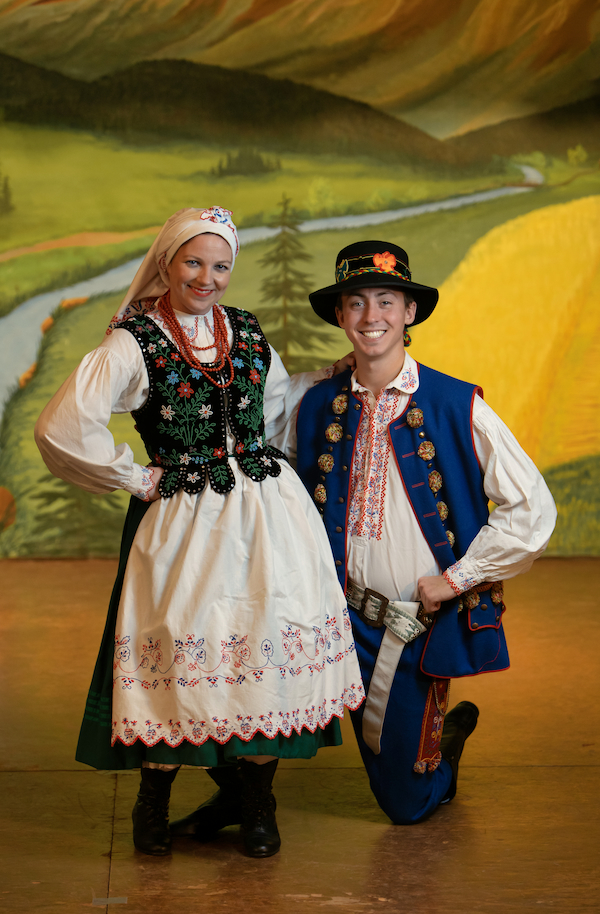
Rzeszowski
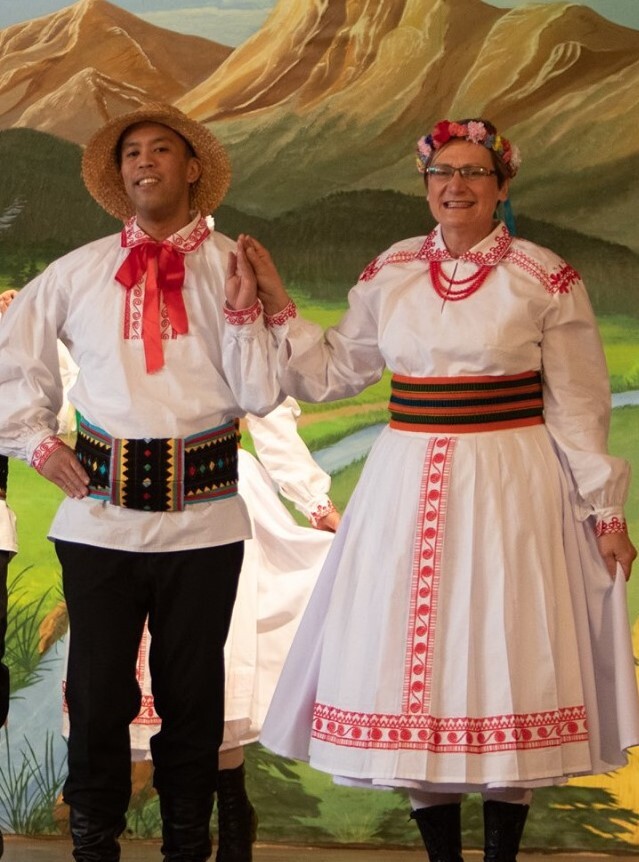
Bilgorajski
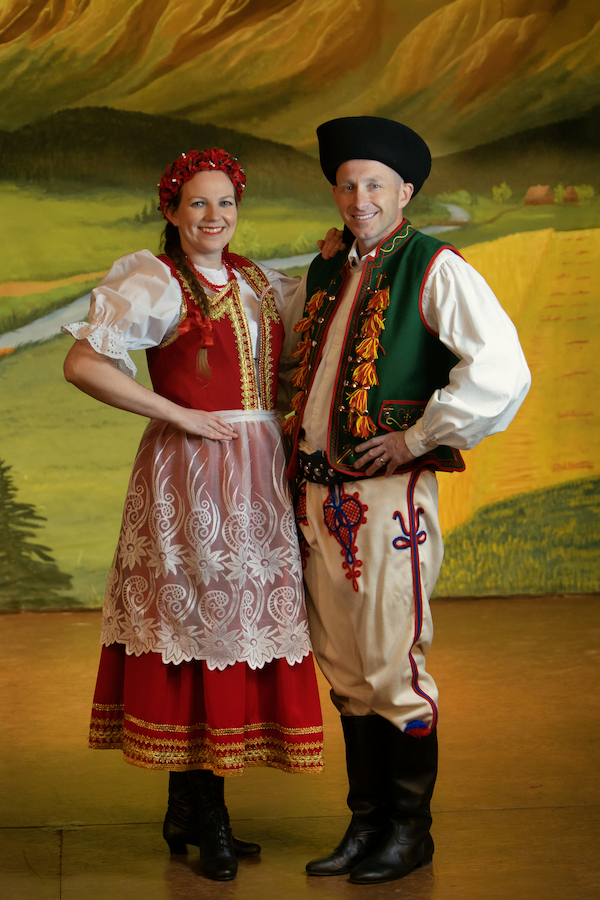
Spisz

Polonez

Opoczynski
These dances and songs from central Poland are famous for their dynamic and original dances and tunes, as well as a large variety of dance styles. The Opoczynski Suite contains lively music and fast-moving formations including the most common dances from the Opoczno region such as the Tramblanka, Oberek, and Polka.

Trojak
The word Trojak means "a trio." Danced in groups of three, the Trojak recounts the sowing of rye, oats, and the celebration at the end of the harvest. For costumes, the boys wear a white shirt, an embroidered vest with red trim, and wool pants along. Their costume is topped with a small hat. The girls wear a white blouse, embroidered vest, flowered skirt with apron, and flowered scarf.

Podlasie
Historical Podlasie was a land of primeval forest and swamps cut with numerous rivers, lying between Prussia, Lithuania, Ruthenia, Mazovia, and the Lublin region. This region was subject to many political, economic, and cultural influences. As a result, this region is multi-religious and multi-cultural.
The male costume is comprised of a wide-brimmed straw hat, simple linen trousers, brown jacket (or sukmana), white shirt with red embroidery, and a woolen belt. The female costume includes a white embroidered blouse, a velvet vest, a skirt of striped fabric, an apron of horizontally-striped homespun fabric, topped by a colorful red bonnet.
This dance begins slowly with a romantic waltz, and then picks up speed to a "storm" of dancing. The dancers re-assemble only to have some of the girls dance away. But all is not lost. Soon the dancers regroup, and the dance finishes with a lively oberek.

Mazur
The Mazur is one of the five national dances of Poland, which is characterized by its lively temp and the mazurka rhythmic (triple metre), accents on the second and third beat of the measure of music. The dance was developed in the eastern area of Mazowsze and gained popularity across ballrooms of Europe during the 19th century. It is commonly performed alongside the mazurkas of Frederic Chopin, the famous Polish composer. Over time, this lively dance was adopted by the higher class who developed and embellished it in recent centuries. Mazur combines speed and vigor with dignity. Despite the constant fast steps, the couples must retain perfect carriage and poise, characterizing Mazur as a dance of nobility.

Cieszyński /Saroz
This light and energetic dance comes from the Cieszyń region in Poland. The Cieszyński Suite consists of three dances: Czardas, Szot Madziar and Saroz. Danced predominantly in pairs, the dance is characterized by its slower tempos, fancy footwork, promenades, spins, and lively polkas. The Saroz is one of the dances typical of this Polish region, which borders the Czech Republic.
The Cieszyń region is noted for its mining of gold and silver, which is reflected in the women’s costumes.

Góralski Podhalański
Podhale, located in the foothills of the Tatra mountains, is often referred to as the "Polish highlands" and is known for its unique and rich artwork. Often romanticized in Polish folklore, the highlander culture is referenced with highly accentuated violins, distinct highlander singing, reminiscent of mountain echoes, and physically dexterous, protective shepherds carrying their hatchets. This dance is characterized by solo dancer heel clicks, short steps, and defined sequences, only to have pairs join in a lively dance in the final segment.

Krakowiak
The city of Krakow in Malopolska (southern and south-eastern Poland) has a rich history. Krakow was the old national capital and was located on one of the major trading routes joining the Middle East and Western Asia to Central and Northern Europe. As a result, the city has had many influences. Today, the Krakowiak is one of the five national dances of Poland, although it developed from humble roots in the villages surrounding Krakow. Eventually, it included various elements from other regions of Poland as well as military influences in the form of gallops, imitating horsemen.
The Krakowiak costume dates to the 14th century when it arrived from Persia. Later in the 18th century, the costume was used as a military uniform by General Kosciuszko. The men wear red and white striped pants. The metallic disks, which are strung to the men's leather belts, come from armor. The tassels on the blue, sleeveless coat come from Napoleonic times, imitating military decorations. The outfit is topped with a four-cornered red hat, ornamented with ribbons and peacock feathers. The women wear beautifully embroidered and beaded velvet vests, and floral skirts. A single woman wears a wreath of flowers, while the married woman wears a white kerchief. Ribbons, hanging loosely, are worn on the right shoulder.

Krasnoludki
Krasnoludki (or Gnomes) is a favourite and well-known children’s song that is easy to remember, fun to sing and dance. The merry gnomes in this dance wear red hats and play the trumpet. This popular song has been sung in every Polish family for many generations.

Eastern Krakowiak
Eastern Krakowiak is attributed to the eastern subdivision of Kraków, the old royal capital of Poland. The dance consists of choreography reminiscent of traditional folk styles with its compilation of songs, waltzes, lifts, and polkas.

Kujawiak
Kujawiak is a Polish folk dance from Kujawy, in north-central Poland. This folk dance is characterized by mazurka rhythms. Although the name of the dance comes from the Kujawy region, the dance can also be found in neighboring regions. This dance is performed in pairs by the men and women.
The men’s costume from Kujawy consists of a long navy coat (sukmana) with a large collar, broad blue pants, a wide belt from red cloth, high boots, and a square hat lined with fur. The women also wear a navy jacket with a small cape around their shoulders, a flowered skirt, an apron, in a contrasting color, and a red scarf tied tightly on the head. The costume is heavy, made of rich, wool fabric, but well-suited to the colder climate of this region.

Warmińksi
Warminski comes from Warmia in Northern Poland. The dance features sweeping waltzes and polkas. The women showcase the large circumference of their frilled skirt by holding it outwards during the dance. A distinctive element of the women’s clothing is a bonnet of embroidered velvet with lace. The women’s Warmia costumes feature a mixture of solid colours - red, blue, gold, and green.
The men wear a red vest, blue jacket, and linen pants. As part of the traditional Warmian folk costume, the men wear straw hats. The men's shirt is straight cut with a small turn-down collar fastened with a button at the neck and at the narrow cuffs.

Łowicz Suite
This Lowicz suite is a collection of dances originating from the region of Lowicz, located in central Poland. For this dance, the women’s costumes are particularly stunning! Large, richly embroidered flowers border the hem of their skirts. The women wear white linen shirts with bright embroidery on their wide sleeves and collars. They hold their arms out gracefully during the dances to show off their handiwork. The colorful stripes on the women's wool skirts and aprons, and on the men's pants, represent the long strips of farmers' fields. During the colder times of the year, women can wear their heavy wool aprons as capes to keep themselves warm. The beautifully embroidered costumes reflect the rich customs and romantic atmosphere prevalent in the dances from Lowicz.

Lubelskie
Situated in the southeastern part of Poland, the Lublin region is known as the crossroads between Eastern and Western Europe. As a result, the folklore from this region has many influences from its eastern neighbors, which can be seen throughout the dance in both the dancer’s steps and costumes. The most typical dances of this region are Mach, Polka from Biłgoraj, Cygan, Folk Waltz, and Oberek. This suite of dances from Lublin displays a variety of rhythms and tempos with a constantly changing direction of movement.

Polka Warszawska
Polka Warszawska, or Old Warsaw Polka, is a humorous street polka, which originated from the capital of Warsaw after World War I. The dancers’ costumes resemble outfits from the early 1920’s where the boys wear checkered pants and suspenders. Girls’ costumes feature striped skirts, aprons, and elaborate headpieces. Polka Warszawska tells the story of farm boys who come from the countryside to the big city to have fun and dance with the local girls. Being working-class people, the dancers poke fun at high society, dancing exaggerated parodies of the tango and waltz while demonstrating a twist on the traditional polka.

Lachy Sądeckie
Consisting of dances from the Sacz region near the foot of the Tatra Mountains, the men and women dance a unique blend of vigorous dances. The men dance the spirited “Krakowiaki” showing off their skill and strength. The women join in to add color and excitement to a series of traditional polka and regional folk melodies.
The costumes from this region are very elaborate. The men wear navy-blue coats and trousers, which are heavily embroidered with red, yellow, and green floral and geometric designs. Their white linen shirts, embroidered in red, are tucked into wide, elaborately tooled leather belts with many brass buckles. Their dark hats are decorated with flowers or ribbons.
The women also wear navy-blue jackets embroidered in the same colors and with the same motifs as the men’s. Their skirts are a deep fuchsia color with black lines near the bottom. Over their skirts, black aprons with needlework at the bottom, are worn. Their white blouses are also embroidered in red and they wear red coral necklaces. On their heads, the women wear scarves trimmed with embroidery in red silk thread.

Przeworski
Dances from the Przeworsk region, located in south-east part of Poland, are very lively and dynamic and carry many humorous lyrics. The dances have a varied tempo, passing gradually from moderate to fast, to very fast. This is observed in the following dances: polka przeworska, sumieszka, bandoska, warszawianka, sztajer-polka.
Folk dances from this region have taken on characteristics from other regions due to crisscrossing trade routes and shifting borders. Typical dances from this region include Majdaneczek, which tells a story about farm boys working in a field; Szewc (or Cobbler) is a dance about a shoemaker who works hard to make shoes; Sarna (or deer) is a lively shuffle dance with a few hops similar to a galloping deer; and Ciurylo a dance about a wanderer who has arrived in town looking for trouble with the hopes of stealing away a young lady, but who is stopped by the brave boys of Przeworsk region.

Kaszubskie
Kaszuby is a unique region located in northwestern Poland, which borders the Baltic Sea, but also has many lakes. Reminiscent of a typical fishing town, the dance and music style imitate waves while illustrating the work, traditions, and play of the Kashubians, an ethnic Slavic group that speaks their own language. Typical dances are Szewc, Kùflôrz, Cepôrz, Marëszka, Dzëk, Wôltôk, Nasza nënka, Òwcôrz, and Kòséder.

Praczki
Commonly performed by children, Praczki is a dance and song about doing laundry: scrubbing, rinsing, hanging to dry, and then ironing their clothes. The children demonstrate their abilities to do the laundry in a dance about working hard but also having fun.

Góralski Źywiecki
This folk dance comes from Poland’s southern mountaineers, located in the Żywiec Beskid mountains. Performed in a mixture of pairs, solo, and groups, the dance is characterized by male dancers showing off their acrobatics, intricate footwork, deep knee bends, and jumps to their female counterparts. The most prevalent Żywiec dances include Siustany, Obyrtka, Kon, Kolo, Hajduk, and Sarna, which involve a collective of songs and calls.

"New" Beginner Dance (Nie chcę cię znać)
This dance embraces the attitude of the children. It is a playful dance where the boys and girls go back and forth teasing each other while trying to get the other to give in and dance with them. The girls get fed up with the boys antics and the boys persistently trying to get the girls attention.

Kurpie Puszczy Zielona
The region of Kurpie in northeastern Poland has been settled only since the 16th century because of the presence of two vast forests: the 'Puszczy Zielona' (Green Wilderness) and 'Puszczy Biala' (White Wilderness). The people of this region were forest dwellers who developed lively and energetic dances. The dance presented here comes from the more northerly Puszczy Zielona (Green Wilderness). The choreography shows off the variety of steps found in the region, ranging from slow movements to intricate footwork.
The men's costume consists of a black cap, plain white linen shirt, worn underneath a short red jacket, and white pants. Women wear a striped wool skirt, mostly red, a white linen blouse, with little decoration, and a vest. The women’s costume is completed by an amber necklace, and a black velvet headpiece, decorated with flowers and ribbons.

Rzeszowski
The Rzeszow region in the most south-eastern corner of Poland, is an area of picturesque beauty with vast uninhabited terrain, where sheep graze on rolling hills. This is a selection of robust dances typical for the region of Rzeszów. These dances are earthy in temperament with humorous little verses. The men and women taunt each other in song between the various dances. The many changes of temperament are characterized by a spirit of spontaneity as well as the dances, which include various polkas. The men wear a sleeveless jacket and pants, which are both blue and have red embroidery. The full, white eyelet shirt has a special leather belt hanging over it, which loops around itself and hangs low at the side. The women's skirts can be many different colours: yellow, green, blue or red. The vests are embroidered in beautiful beadwork and come in various colours.

Bilgorajski
The Bilgoraj suite of dances comes from the Lublin region in south-eastern Poland. It features several dances including a waltz, a polka and builds to an oberek near the end. The women’s white costumes make this dance stand out visually from all others. The ladies’ floral, ribboned headpieces and the men’s energetic dance steps create a playful and lively dance.

Spisz
This Spisz suite of dances comes from a small region of Poland in the borderland of the Carpathian Mountains, just north of Slovakia. The region reflects the historical relations amongst Poles, Hungarians, and Slovaks. It is a very vibrant and exciting suite of dances that has drawn its style and costume from the crossed-over relationship of these ethnic groups.
The suite of dances starts off with a "Koleczko" where the women enter to show off their intricate footwork in a circle dance. The men then join in, and the couples compete against one another, showing off their own solos at the same time. The rest of the suite dance follows with its fast "czardasz", or Hungarian tavern melody, and "Klaskamy," a traditional form of clapping and body-boot-slapping.

Polonez
Traditionally, the Polonez was performed at the beginning of important state functions and events. This graceful, stately dance was popular amongst the nobility in the courts of the Polish kings. The costumes, made of rich velvet, brocade, and trimmed with fur, reflect the elegance of the dance movements. The Polonez is often called "The Great Polish Dance."
